Glastonbury Tor - Holy Place
PILGRIMAGE UK: HOLY PLACES

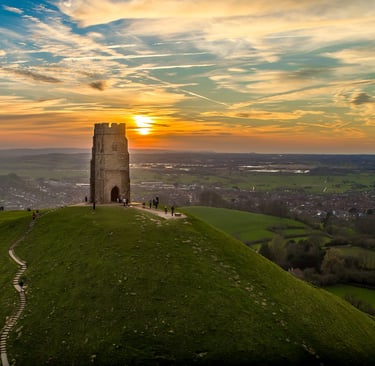
Glastonbury Tor rises from the Somerset landscape as a profound silhouette against an ever-changing sky—a monument of stone and time that has long beckoned spiritual seekers from near and far. Far from a conventional sacred structure with walls and roofs, the Tor itself stands as an open-air cathedral, inviting contemplation of both its storied past and the transcendent artistry of nature. Here, on this ancient hill, one cannot help but sense that the divine has made its mark not only on human history but also on the very fabric of creation.
As one stands at the base of Glastonbury Tor and begins the ascent along its ancient steps, the pilgrim is enveloped by an atmosphere charged with quiet reverence. The weathered stone, softened by centuries of wind and rain, conveys not only the passage of time but also the persistent beauty of a creation built to endure. The Tor’s imposing presence against a clear, azure sky evokes biblical allusions such as those found in Psalm 19:1, which declares, “The heavens declare the glory of God,” though here the focus is drawn not to the vault of the sky alone but to the hallowed ground itself. The hill, with its interlacing terraces and moss-clad walls, serves as a living reminder that God’s work is revealed in every element of the natural world.
The significance of Glastonbury Tor is enhanced by its dual identity as both a site of human endeavour and one of natural splendour. Its origins are cloaked in mystery and legend, intermingling local lore with strands of Christian symbolism. Over time, this convergence of myth and geographical grandeur has elevated the Tor to more than a historical landmark—it has become a sanctuary where nature and spirituality coalesce. As the pilgrim gradually climbs towards the summit, each step is suffused with a sense of purpose, reminiscent of the meditative journeys described by contemplatives throughout the ages.
The experience of ascending the Tor naturally invites reflection on the enduring presence of God in all things. The interplay of daylight dancing upon weathered stone and the shifting textures of shadow as clouds pass overhead instils a profound awareness that the divine is not confined solely to the interiors of churches or chapels. Instead, the sacred is manifest in the openness of creation itself. Theologian Henri Nouwen once observed that “the natural world expresses the mystery of God in a language free from words.” Here on Glastonbury Tor, that language is spoken fluently by the whispering wind across ancient battlements, the rustling of wild grasses, and the resolute silence of timeless stone.
Indeed, the Tor stands as a testament to the unity of all creation—a theme echoed by many modern theological voices. It is a reminder that the splendour of nature is an invitation to encounter divine love in its rawest form. Rather than being an abstraction relegated to sacred texts, the divine here appears in tangible, measurable phenomena: the way sunlight refracts through a prism of clouds, the persistent endurance of stone that has weathered countless storms, and the cyclical regeneration of life that adorns the valley below. As one absorbs these experiences, the boundaries between the Creator and creation seem to dissolve, leaving behind a sense of intimate communion with a power that is greater than the sum of its parts.
Glastonbury Tor is not merely a static relic but an ever-changing tapestry that mirrors the dynamic rhythms of nature. With the coming of spring, the hill is modestly adorned with new growth and blossoms, suggesting renewal and hope. In summer, the Tor basks under a generous sun, its stones glowing warmly as if infused with an ancient fire. Autumn transforms the landscape with a rich palette of ochres and russets, echoing themes of harvest and reaping. Even in the stark austerity of winter, when a light frost coats the ancient surface and the air is filled with a quiet stillness, there is a palpable majesty that prompts awe and introspection. Each season presents an opportunity for the pilgrim to observe the spiral of creation—a living catechism where nature itself becomes a lesson in life, death, and regeneration.
This natural liturgy invites the individual to consider how the divine intersects with the ordinary and the everyday. The Tor’s terraces, seemingly arranged by forces both human and elemental, have often been likened to a sacred labyrinth—a structure in which the pathway itself becomes a ritual journey. As the pilgrim negotiates these steps, the experience is one of both physical exertion and spiritual ascent, a reminder that the journey toward the divine requires an integration of body, mind, and spirit. Such reflections resonate with the thoughts of Dietrich Bonhoeffer, whose insistence on a faith that is fully engaged with life challenges believers to see beyond the confines of ritual into the transformative reality of everyday existence.
For those who have come to Glastonbury Tor in pursuit of quiet contemplation, there is a communal dimension to the pilgrimage that is immediately apparent. Other travellers—seeking solace, inspiration, or simply a connection with something timeless—gather here, each drawn by the magnetism of the hill. In these moments of collective stillness, the pilgrim witnesses a shared commitment to recognising the sacred imprinted on the world around them. It is a reminder of the early Christian communities who would have sought refuge in nature, finding in its vastness a reflection of the boundless compassion of God. The silent exchange of smiles or a brief nod of acknowledgement unites all present in an unspoken declaration: that the beauty of creation is a universal prayer.
The religious significance of Glastonbury Tor is deepened by ongoing reflections within wider theological discourse. Hans Urs von Balthasar remarked on the indispensable role of beauty in revealing divine truth, suggesting that aesthetics, when embraced in humility, can lead the soul toward a deeper understanding of God’s nature. This perspective is vividly brought to life on the Tor, where every facet of the landscape seems designed to evoke an immediate sense of wonder. The cascading light across ancient stone, the murmuring of wind in the grass, and the panoramic vistas that stretch into infinity all contribute to a meditative experience that challenges the pilgrim to reimagine worship as more than a ritual confined within walls.
Furthermore, the experience of Glastonbury Tor encourages the pilgrim to transcend the dichotomy between sacred and secular. In a world where the divine is often seen as remote or abstract, the hill confronts us with a different reality—one in which the presence of God is woven into every element of the natural tapestry. This realisation aligns with the profound insights of theologians who insist that every aspect of creation, from the smallest blade of grass to the grandest mountain, bears witness to the Creator’s boundless love and ingenuity. Such an encounter is not merely intellectual but deeply incarnational, striking a chord in the soul that reminds one of the incarnational mystery of Christ—a God who entered our world and dwelt among us.
At the summit of Glastonbury Tor, the view is both humbling and expansive. From this vantage point, the pilgrim is offered a glimpse of a creation that seems to stretch infinitely—a reminder of the eternal horizon of God’s promise. It is a moment where the physical act of climbing has culminated in a spiritual elevation, where the weariness of the journey is replaced by a palpable sense of divine presence. The vista that unfolds is a silent sermon in itself—a testament to the enduring beauty and mystery of the world, and an invitation to contemplate the ineffable nature of the divine.
In the quiet aftermath of the ascent, as the pilgrims linger at the peak, there exists an atmosphere of reflection and gratitude. Here, the boundaries between past and present blur, and the soul finds itself in conversation with centuries of testament and silent prayer. The experience of standing upon Glastonbury Tor resonates with the ancient wisdom that the natural world is a sacred text—a narrative written by God in the medium of time and stone. It is a call to embrace a spirituality that honours both the seen and the unseen, that recognises God’s gentle touch in the rustling wind and the enduring solidity of weathered rock.
Ultimately, Glastonbury Tor offers a deeply personal invitation to witness, firsthand, the convergence of nature, history, and spiritual yearning. It challenges the pilgrim to reconsider the notion of sacred space, suggesting that true sanctity is not limited to ornate chapels or cloistered abbeys but is found wherever the human spirit is open to the whispers of the divine. In every step upon its ancient paths, in every moment of quiet awe at its summit, the pilgrim is drawn into a timeless dialogue—a conversation that speaks of creation’s glory, the enduring power of renewal, and the inexhaustible wellspring of divine grace.
Departing from the Tor, one carries with them not only memories etched into the mind but an enduring conviction that the natural world is replete with sacred signs. The pilgrimage up and around Glastonbury Tor stands as a reminder that every stone, every ray of sunlight, and every breath of wind is an invitation to see beyond the mundane—to recognise a divine tapestry that sustains and inspires, here and now, in the ever-changing rhythm of life.
Glastonbury Tor: A Towering Testament to Divine Mystery
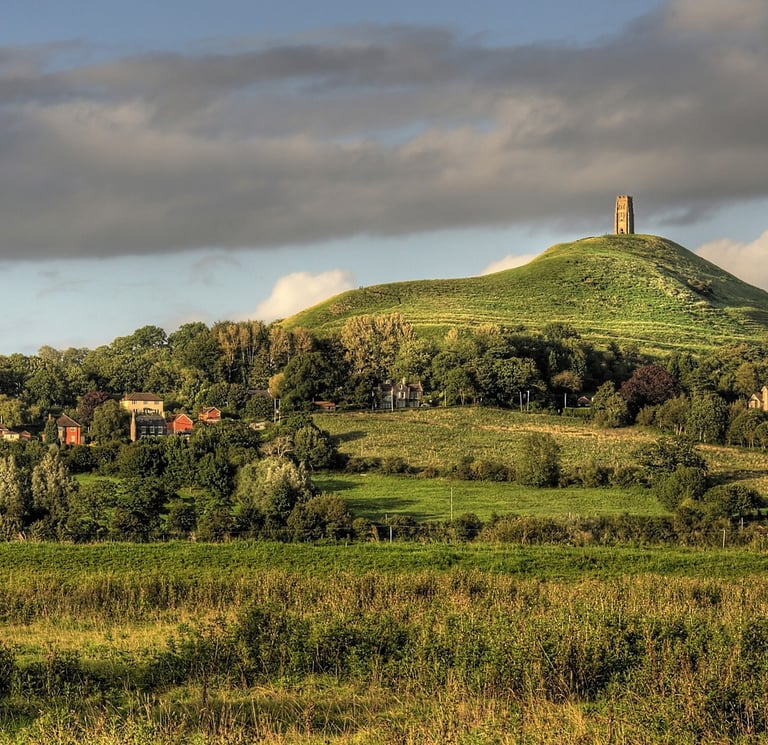

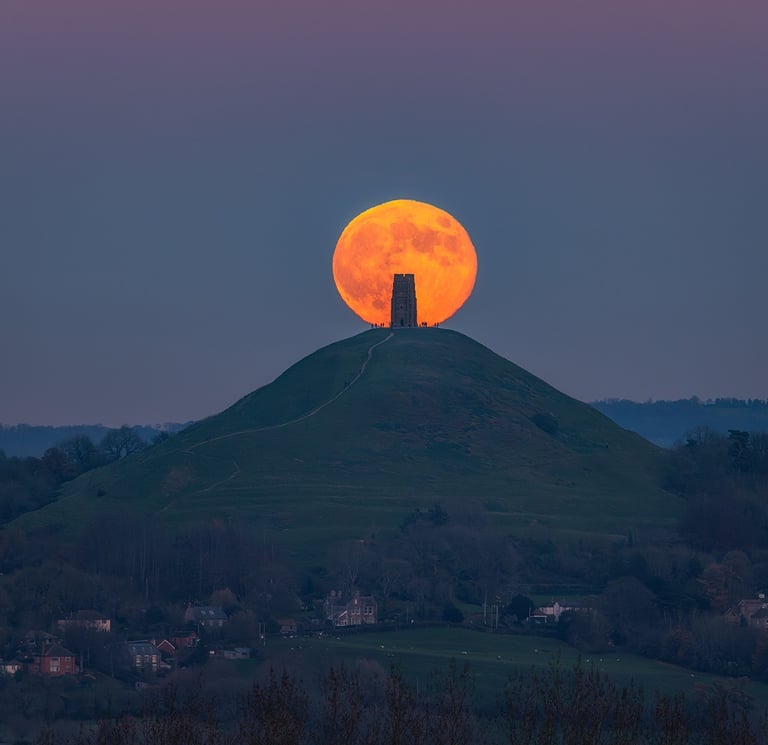

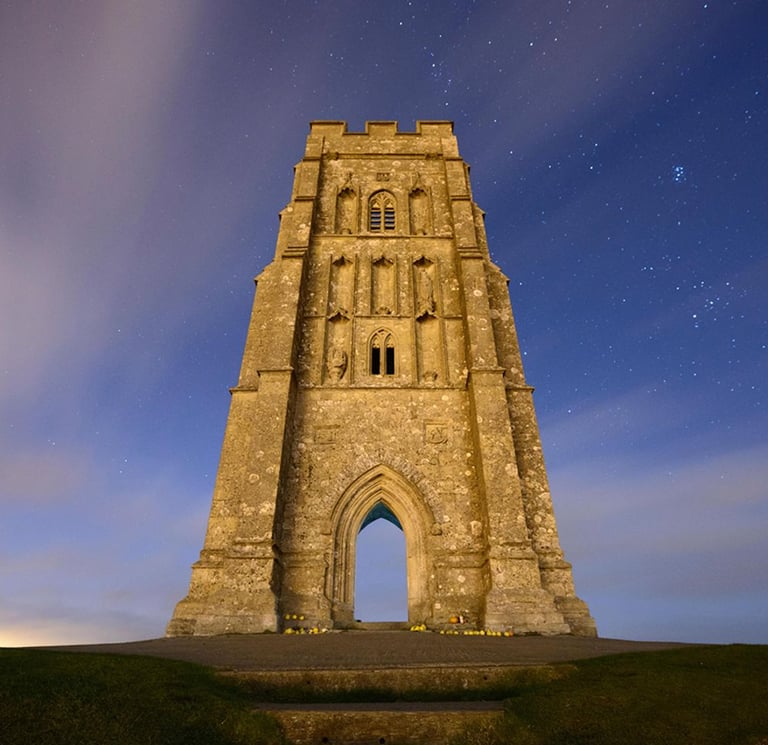

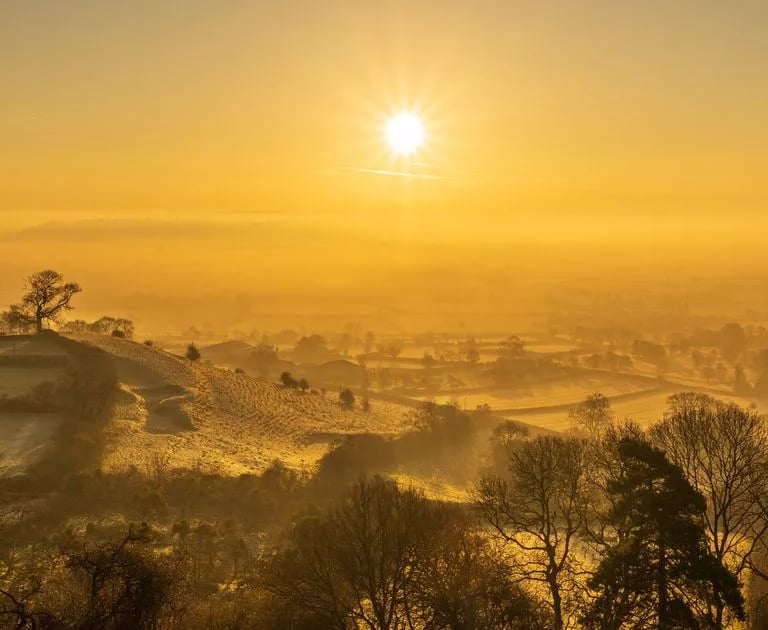

Ancient Apostolic Catholic Church
Embracing faith, inclusion, and compassionate service together.
ST THOMAS AQUINAS SEMINARY
© 2025. All rights reserved
QUICK LINKS
